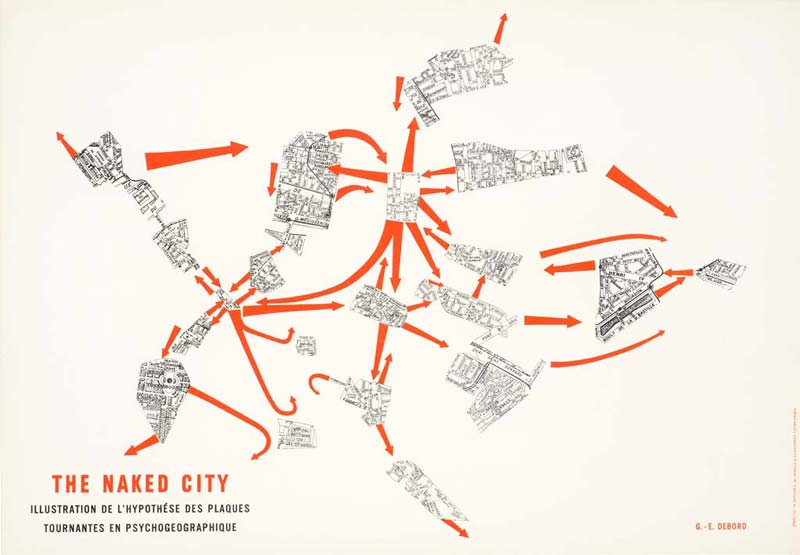
Artwork by: Linda Zampieri
Suoni tra interfacce ipnotiche e dilatazioni spaziali. Sistemi computazionali a prova di futuro. Genoyds Dryads Swim Alone, uscito per Eerie e Only Genes Remain uscito con New York Haunted sono i progetti xenofemministi di Federico Cataldo aka Serena Butler, producer emiliano al quale abbiamo chiesto di parlarci della sua musica. Ad accompagnare l’intervista, che verte su Xenofemminismo, genetica, biohacking ed in generale sul futuro, anche GUESTMIX#12, ascoltabile dal player sottostante [tracklist in chiusura di articolo, al termine della versione inglese].
Serena Butler sarà protagonista dell’evento Timeshift a Bologna, questo Sabato 14 Gennaio presso la Zona Roveri Music Factory, assieme a Lakker, Positive Centre e Acronym [evento FB].
D: Ciao Federico, grazie per il tempo che ci hai dedicato. Vorremmo iniziare chiedendoti come è nato il nome Serena Butler? Ci vuoi spiegare chi è e a cosa è dovuta questa scelta?
R: Serena Butler è un personaggio minore della Saga di Dune, presente nei prequel scritti dal figlio di Frank Herbert dopo la sua morte. Nei libri rappresenta la resistenza contro un impero totalitarista di macchine pensanti: un essere umano che lotta per la sopravvivenza della sua specie, senza futili differenze genetiche. Sono da sempre un grande fan della saga, inoltre il nome ha una musicalità tutta sua che mi intriga a livello viscerale, suona molto retro-futuristico. Il che è perfettamente adatto al progetto xenofemminista (e musicale) che sto portando avanti.
D: “senza futili differenze genetiche…”: in effetti nella storia dell’evoluzione umana anche la realtà stessa è sempre stata legata a modelli genetici, a volte codificati in maniera soggettivistica e aprioristica. A tuo papere lo xenofemminismo riesce ad abbattere queste classificazioni? Quando e in che modo è avvenuto il tuo approccio a questo movimento?
R: Sì, lo xenofemminismo abbatte (o quantomeno si prefigge di farlo) queste membrane. Naturalmente il manifesto è incredibilmente articolato e dettagliato a riguardo, per cui ne consiglio caldamente un’attenta lettura da parte di chiunque. E’ una sorgente estremamente permeabile e flessibile, è possibile adottarlo nella sua interezza oppure utilizzarne alcuni tessuti per creare e riprodurre un proprio linguaggio derivato, come per talea. Il mio incontro con questa visione è stato in realtà molto banale: un mio ex coinquilino condivise il link su Facebook e io ne rimasi subito affascinato. Da lì ho cominciato ad utilizzarlo come base per un mio codice di interpretazione della realtà.
D: Sì, il manifesto è realmente molto articolato, ricco di sfumature, dal quale una direzione ne rivela un’altra che sembrava sostituita. XF è un movimento che prende forma a Berlino. Qual è il tuo rapporto con questa città? E’ da li che nasce la tua collaborazione con l’etichetta Eerie di Marco Shuttle?
R: Non ci abito ma frequento sempre alcuni festival (CTM e Atonal) che reputo davvero interessanti. Il mio rapporto con lei è particolare. Amo la città per certi versi, e la detesto per altri. Ne riconosco la centralità nell’attuale continuum musicologico della techno attuale, ma non sono un’amante delle ultime mode su chi spinge più forte. Paradossalmente amo molto di più stare a Berlino e non fare nulla in giro piuttosto che fare clubbing.
In merito ad Eerie, no, il rapporto non è nato tra quelle strade. E’ una domanda che mi fanno spesso, ma preferisco mantenere un alone di mistero sulla faccenda. Si sappia solo che il nostro incontro non è avvenuto sul piano materiale.
D: Il ‘non fare nulla in giro’ ci riporta alla mente sistemi di vivere la città che in qualche modo tendono a decostruire l’approccio al paesaggio urbano, dal flâneur baudelairiano passando per Walter Benjamin fino alla deriva situazionista. Ipotizzando una tracklist per il tuo vagare…?
R: Facendo una summa di tutte le mie passeggiate in giro per Berlino, tra estate e inverno, questa sarebbe una ipotetica tracklist (senza un ordine particolare):
- Aleksi Perålå – UK74R1512120
- Simo Cell – Piste Jaune
- Anne Briggs – Go Your Way
- Crash Course In Science – Crashing Song
- Gunnar Haslam – Infinite And Cyclical
- Prince Jazzbo – Replay Version
- Quadrant – Infinition
- Donato Dozzy & Nuel – Aqua 8
- Photek – Into The 90’s
- Drexciya – Neon Falls
- Motion Sickness Of Time Travel – Censer
Tutte queste tracce sono state ascoltate tra parchi, club, metropolitane, incroci, laghetti…ognuna di esse rappresenta una infinitesima parte di questa città di cui ho voluto appropriarmi. Ma è solo una delle possibili strade tra i mille e uno rivoli che lo Sprea sgorga costantemente.
D: Il leitmotiv nei tuoi album è l’elemento futuribile. A partire dai titoli, fino alle tracce come ‘People love machine 2029’ o ‘Oto’ con i suoi replicanti e il riferimento a Blade Runner. In base anche a queste considerazioni, come definisci la tua musica? Ci vuoi parlare dei tuoi progetti e ad articolare in merito alla suddetta relazione che intercorre con Xenofemminismo?
R. La mia musica è semplicemente tale. I connotati techno e ambient sono naturalmente riconoscibili, ma il prossimo disco potrebbe essere completamente mutato nella forma, mantenendo però il contenuto “futuribile” (come lo avete definito nella domanda). Il mio progetto al momento è ancora in uno stadio embrionale, nel primo EP i riferimenti al movimento e al manifesto sono particolarmente criptici, suggeriti tramite le immagini (il centerfold) e i titoli delle tracce. In futuro ci sarà una presenza di dati più massiccia, sia nei dischi che in altri interventi digitali (che al momento preferisco non rivelare). Lo xenofeminnismo è materia in divenire, un messaggio di abolizione di uno standard genetico in favore di mille sessualità diverse [Let a hundred sexes bloom! ndr]. Biohacking ed evoluzione logaritmica della tecnologia sono temi che ci stanno particolarmente a cuore, in quanto armi in grado di erodere sempre più velocemente le membrane di gender e differenze sessuali, in favore di un equlibrio e di una libertà di essere senza controindicazioni. Essendo la techno una visione futuristica e da sempre legata ad una condizione di post-mondo, ho trovato fosse uno splendido veicolo ove legare i miei piccoli obiettivi e visioni. In maniera non-violenta e non verbale.
D: L’interazione tra musica post-mondo ed ascoltatori del presente porta alla creazione temporanea di spazi trasformati, dall’edificio postindustriale alla poltrona teatrale, da installazioni museali al club. Considerando anche la scena italiana, tu quali spazi preferisci? Come ti rapporti nei live con essi?
R: L’immaginario migliore dove inserirla è il netherworld digitale, non uno spazio fisico. Quello che io chiamo il “submerged underworld”, un non luogo dove molte anime si agitano sotto una foschia che ribolle come le onde del mare. Tutte le categorie di spazi che hai elencato sono proiezioni, innesti di quel piano di esistenza, per cui riesco ad adattarmi a qualunque situazione. Non facendo ancora live veri e propri (per ora), non ho un rapporto privilegiato con questo o quello spazio in paricolare. I club, che sono gli unici templi e altari a cui voglio partecipare, sono sicuramente privilegiati. I musei mi piacciono in silenzio, ma ho una passione per gli edifici antichi, con storie particolari, che hanno vissuto molte vite nei secoli passati.
D: Per finire, quale di queste scene cinematografiche vorresti sonorizzare?
- Shuuji Terayama, the Cage
- Chris Marker, Sans Soleil
- Rainer Werner Fassbinder, Beware of a Holy Whore
R: Tra le tre, per quanto tutte affascinanti, sicuramente Chris Marker. E’ un minuto molto intenso, immerso in un tramonto lisergico che già mi offre moltissimi spunti creativi. Potrei anche solo appoggiare un frammento dei Krokodyl o degli Anna Själv Tredje e sarebbe perfetto, ma troppo facile. Uno sciame di grani o di voci sommerse, un beat sepolto nella sabbia del mix, un minuto di silenzio, un segmento del discorso sui diritti delle donne letto da Emma Watson. Le possibilità sono molte, e tutte ugualmente interessanti.
L’interessantissima e suggestiva intervista si conclude qui, rimandiamo nuovamente all’appuntamento di questo Sabato alla Zona Roveri Music Factory di Bologna per il primo evento Timeshift del 2017. Per avere un’idea di cosa aspettarvi, ecco il nostro videoreport del Season Opening dello scorso Settembre. Support the crew!

ENGLISH VERSION
Sounds between hypnotic interfaces and spatial expansion. Future-proof computational Systems. “Genoyds dryads swim alone” which came up for Eerie and “Only Genes Remain” for New York Haunted are the xenofeminist projects by Federico Cataldo aka Serena Butler, a producer from
the Italian region called Emilia Romagna, who answered here a few questions about his music. Going along with the interview – focused on Xenofeminism, genetics, biohacking and the future – also GUESTMIX#12, which you can listen to via the mixcloud player here below [the trackslist is reported at the end of the article].
Serena Butler will share the stage with amazing artist such as Lakker, Positive Centre and Acronym this Saturday in Bologna, Italy for the 2017 Timeshift opening event sat Zona Roveri Music Factory [FB event].
D: Hi Federico, thank you for your time. What is the origin of the name “Serena Butler”? Can you tell us to whom are you referring and why did you choose it?
R:. Serena Butler is a minor character in the Saga of Dune, present in the prequels written by the son of Frank Herbert after his death. In the books she represents the resistance against a totalitarian empire of thinking machines. A human being whose struggle for survival of her species, without futile genetic differences. I’ve always been a big fan of the saga, and the the name also has a musical quality of its own that intrigues me at a gut level, it sounds very retro-futuristic. Which is perfectly suited to the xenofeminist (and musical) project I’m doing in these times.
D: “Without futile genetic differences”. Actually, in the course of human evolution, reality’s always been connected to genetic models, generally codified in a subjective, a priori-choosen scheme. Is Xenofeminism going to wreck these codifications? When and in which way did you reach out to this movement?
R: Yes, xenofemminism breaks down (or at least intends to do so) these membranes.Of course the manifesto (http://www.laboriacuboniks.net/) is incredibly articulated and detailed about it, so I strongly suggest anyone to read it carefully. It’s a highly permeable and flexible source: you can adopt it in its entirety, or use some tissues of it to create, reproduce and derive your own language.
My encounter with this vision was very trivial: my former roommate shared the link on facebook and I was immediately fascinated by it. There since I started to use it as a base for my code of interpretation of reality.
D: The Manifesto is indeed well-structured and multi-faceted, thought paths are mutually unveiled one by the other to reach a great level of complexity. The movement had its beginning in Berlin : what is your relationship with that city ? Did your partnership with the record label Eerie and its manager Marco Shutle start there?
R: I do not live in Berlin but I always attend some festivals (CTM, Atonal) that I find really interesting. My relationship with her is special. I love the city in some ways, and much less for some others. I recognize its central role in the present musical continuum of the current techno scene, but I’m not a lover of the latest fashions about who’s the producer pushing the hardest. Paradoxically, I love a lot more to stay in Berlin and do nothing rather than clubbing.
No, the relationship were not created among those roads. It’s a question I often get asked to, but I prefer to keep some mystery alive about the matter. For the moment, you should only know that our meeting did not take place physically.

D: Lazing around reminds us of the ways of living a city that somehow tend to deconstruct the common approach towards the urban landscape, from Baudelaire’s flâneur to the situationism, including Walter Benjamin. Could you choose few tracks as the soundtrack for your wanderings?
R: To summarize of all my walks around Berlin, taken between summer and winter, this would be a proper hypothetical tracklist (in no particular order):
- Aleksi Perälä – UK74R1512120
- Simo Cell – Piste Jaune
- Anne Briggs – Go Your Way
- Crash Course In Science – Crashing Song
- Gunnar Haslam – Infinite And Cyclical
- Prince Jazzbo – Replay Version
- Quadrant – Infinition
- Donato Dozzy & Nuel – Aqua 8
- Photek – Into The 90’s
- Drexciya – Neon Falls
- Motion Sickness Of Time Travel – Censer
All these tracks have been heard in parks, clubs, undergrounds, crossings, lakes … each of them represent an infinitesimal part of this city that I wanted to take possession of. But it is only one of the possible among the other thousand plus one streams that constantly flows over Berlin.
D: In your albums the element ‘future’ represents a leitmotiv, starting from the titles themselves to tracks like “People love machine 2029” or “Oto” with its replicants and the reference to Blade Runner. Having considered that, how would you define your music? Can you tell us about your projects and the connection with the xenofeminism?
R: My music is simply as it is. Techno and ambient characteristics can be naturally spotted, but the next album could be completely changed in form, while keeping the ‘futuristic’ content (as you defined it). My project is currently at an embryonic stage: for example, the first EP featured references to the movement and to the XF manifesto that were particularly cryptic, suggested by the images (the centerfold) and track titles. In the future, instead, there will be a more massive data presence, both in the records and in other digital interventions too – which I actually prefer not to reveal, yet. Xenofeminism also is a matter in the making, an abolition of a genetic standard in favor of a thousand different sexuality (Let a hundred sexes bloom!). Biohacking and logarithmic evolution of technology are issues that we feel strongly, as weapons that could erode faster and faster the membranes of gender and sexual differences, in favor of a balance and a freedom without any contraindications. Having techno always been linked to a futuristic vision of reality and to the conditions of the post-world, I found it being a wonderful vehicle to express myself through and where to tie my small goals and visions. In a non-violent and non-verbal way.
D: Finally, which one of these scenes would you like to write a soundtrack to?
- Shuuji Terayama, the Cage
- Chris Marker, Sans Soleil
- Rainer Werner Fassbinder, Beware of a Holy Whore
R: All of them are extremely fascinating, but I would surely choose Chris Marker, hands down. It’s a very intense minute, immersed in a lysergic sunset that already offers me many creative suggestions. I might even feature a fragment of Krokodyl or Anna Själv Tredje and it would be perfect, but maybe even too easy. A swarm of grains or submerged voices, a beat buried in the sands of mixing, a minute of silence, a women’s rights discourse read by Emma Watson. The possibilities are many, and all equally interesting.
TRACKLIST
- Lunar Abyss Deus Organum – Atanimonni
- M16 – Crudo Microphone
- Pangaea – High
- Fabio Fabor – Angelo Di Mare
- Versalife – Raptures Of The Deep
- Pulse One – Fear
- Link – Amenity
- Stasis – Artifax
- Andy Stott – Numb
- Leo Anibaldi – Panacea
- Varg – Nastroend
Are you enjoying what you see on PAYNOMINDTOUS? If that’s the case, we’d like to kindly ask you to subscribe to our newsletter, our Facebook group, and also to consider donating a few cents to our cause. Your help would be of great relevance to us, thank you so much for your time!
PAYNOMINDTOUS is a non-profit organization registered in December 2018, operating since late 2015 as a webzine and media website. In early 2017, we started our own event series in Turin, IT focused on arts, experimental, and dancefloor-oriented music. We reject every clumsy invocation to “the Future” meant as the signifier for capitalistic “progress” and “innovation”, fully embracing the Present instead; we renounce any reckless and ultimately arbitrary division between “high” and “low”, respectable and not respectable, “mind” and “body”; we support and invite musicians, artists, and performers having diverse backgrounds and expressing themselves via variegated artistic practices.